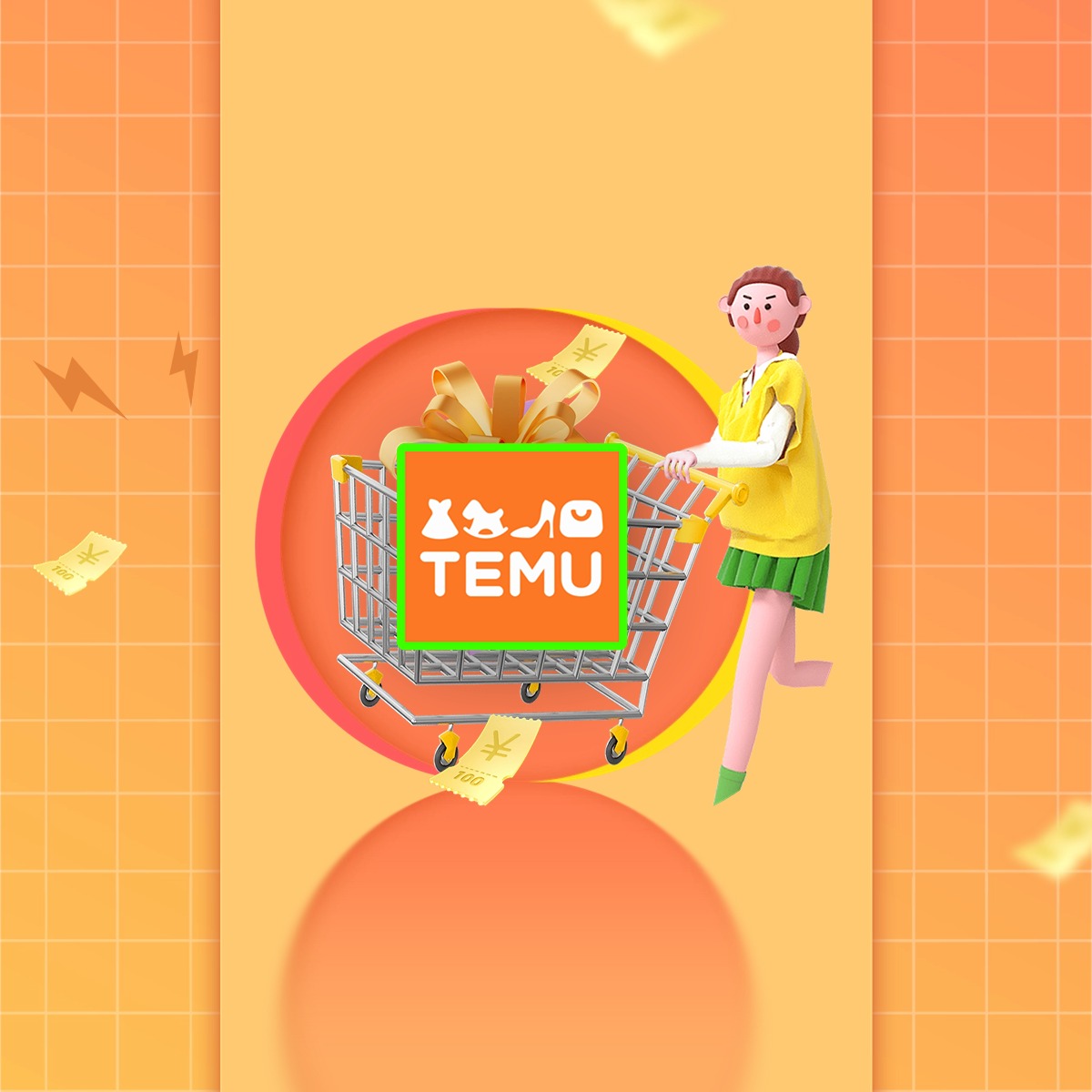Popular Posts
- Order Management
- TikTok Shop
- Temu
- About 4Seller
- Amazon
- Shopify
- Inventory Management
- Amazon MCF&FBA
- Seller Tips
- UPS
- Amazon Shipping
- Listing Management
- FedEx
- DHL Express
- Creator Bulk Invite
- eBay
- GLS
- Marketplace News
- Shein
- Inventory Sync
- Walmart
- Royal Mail
- Amazon MCF
- Multi-channel Store
- Walmart WFS
- Shipping Integration
- Poste Italiane
- WooCommerce
- CaiNiao
- ShipHero
- Shipping Label
- BRT
- Yodel
- Stripe Tracking Sync
- Beginner Tutorial
- UniUni
- Correos Express
- USPS
- GOFO
- Deutsche Post
- Correos
- DHL Parcel
- Etsy
- Evri
- CIRRO
- PayPal Tracking Sync
- Chronopost
- Kaufland
- 3PL
- Logistics Rule
- OTTO
- ShipBob
- SPU Catalog
- OMS
- FBM
- Cdiscount
- Request Review
- AliExpress
- DPD
- Price Sync
- DHL
- Platform Integration
What Is Temu? All You Need to Know
 By Joline20 Jun,2024
By Joline20 Jun,2024
Temu, No.1 downloaded Shopping App in the US
As an e-commerce marketplace developed by PDD Holdings, a multinational commerce group, Temu was launched in the U.S. in late August 2022 and quickly gained widespread attention within three months. Temu’s popularity can largely be attributed to advertising but also to its strategy of offering free items to users who promote the app on their social networks and get their friends and family to sign up.
Pinduoduo, the sister company of Temu, has become a dominant force in the domestic e-commerce market in China, but it remains to be seen whether it can replicate this success abroad. Some believe that the concept of bringing Chinese supply chains to overseas markets could be successful, but there are also many skeptics who have doubts about the Temu platform, which is similar to other “low-cost” marketplaces such as Wish and AliExpress.
Customer profile: Who is shopping at Temu?Which consumers does Temu attract? Surprisingly the Chinese e-commerce app is drawing significant interest from Baby Boomers and Generation X shoppers. That is against previous findings that pointed more to young people from Generation Z.
In its inaugural year of operation in the United States, data from the Chicago-based research firm Attain reveals that these older generations not only shopped on Temu more frequently but also spent more than their younger counterparts. Notably, price-savvy Baby Boomers, aged 59 and above, demonstrated remarkable loyalty to the platform. They placed approximately six orders in a span of 12 months, which is double the amount of orders placed by Gen Z shoppers, who fall within the 18 to 26 age range.
An initial 2023 U.S. study by Coresight Research on the relationship between U.S. consumers and Temu also found:
- Almost half of surveyed consumers are familiar with Temu.
PDD Holdings, Temu's parent company, invests heavily in marketing, and Temu uses gamification and referrals to acquire new users.
- Among consumers who are familiar with Temu, nearly two-thirds would purchase an item from the marketplace,
indicating substantial consumer appetite for its offerings.
- Lack of product information is a barrier to purchase.
Among consumers who would not purchase from Temu, too little information on either how products are made or their origin were top concerns.
Be careful of reviews on TemuTemu employs customer reviews as a sales strategy, much like other marketplaces and platforms. However, it appears to make it challenging for customers to locate and read negative feedback. Generally, one would find very few such reviews available.
If you’ve ever tried submitting a review on Temu, you’ll notice that the platform seems engineered to only accumulate positive feedback, effectively discouraging negative comments.
While this approach may boost sales, it hampers a genuine evaluation of customer experiences with a product.Benefits of and for Temu
- Temu has stricter controls on merchants. There are a couple of ways in which Temu appears to have an advantage over AliExpress and Wish. First, the products on Temu are required to match the product listing closely, so what you see in the pictures is what you get. Second, merchants are not allowed to add exorbitant shipping fees to cheap products, which can help prevent consumers from feeling deceived and frustrated with the app.
- More customer friendly. Temu is available for both iPhone and iPad, and the payment process is very convenient. If you’re using an iPhone, Apple Pay is automatically supported, making it easy to place orders quickly.
- Reasonable delivery time. The time from order to receipt of goods is much faster. Currently the average product is delivered in 5-7 days, compared to sometimes a month on AliExpress or Wish.
- Different business models between merchants and the marketplace. One aspect of Temu’s business model that sets it apart from some other marketplaces is that it does not allow dropshipping, which is the practice of merchants purchasing from suppliers only after a consumer has placed an order. This approach to fulfillment may help prevent the long delivery times that contributed to Wish’s closure in some countries, as delivery times are not reliant on the relationship between the marketplace and merchants.
Hurdles and Challenges for TemuPDD Holdings has said that Temu will not blindly replicate what worked for its sister platform Pinduoduo in China in the markets it operates in, but would rather start from the needs of the customers. One of the reasons for Shein’s success, a Chinese online fast fashion retailer, is that it is focused on women’s apparel and lifestyle, whereas Amazon is at a disadvantage. In contrast, categories on Temu are not very much different from Amazon, AliExpress, or Wish.
Below you can find some of Temu’s challenges:
Consumer’s doubts about a foreign marketplace. Amazon is by far the most established platform in the United States. Consumers tend to go to Amazon or a local marketplace when they are looking for a specific product with a certain brand and model, or when they need to purchase a large piece of furniture. Since Amazon offers products ranging in price from a few dollars (!) to thousands of dollars, some consumers may not be convinced by the low prices on Temu. AliExpress has sponsored a lot of events in recent years, which has turned off some consumers who view the company as a retail brand and find frequent marketing to be intrusive. In China, people may be more accustomed to and accepting of frequent marketing activities, but this may not be the case in other countries where there needs to be an acceptance process.
Compliance issues. The West has robust laws and regulations in place to protect originality and consumer rights, which may impact Temu’s business. Additionally, some consumers may have difficulty accepting the presence of white-label merchants on the platform.
The logistics infrastructure is still at an early stage. In the Chinese cross-border e-commerce market, the cost of goods is small while the cost of logistics and warehousing matters more. Temu chooses as the third-party logistics provider which is cheaper and has grown rapidly in the past few years. However, J&T Express is still very young in the US market. Fanno, incubated by TikTok (ByteDance), has previously suffered from a lack of logistics infrastructure which affected the margins of both sellers and the marketplace itself.
Streamline Your Operations on Temu with 4SellerFulfillment by Amazon (FBA) is a service based on storage, picking, packing, and shipping that can help sellers simplify the sales process to achieve faster delivery times and higher sales. By storing products in Amazon's fulfillment centers, sellers can save time and effort in storing, picking, packing, and shipping products, and use Amazon's powerful distribution system and customer service network to quickly provide reliable services to customers. In addition, using FBA can also increase the visibility of products in the Amazon marketplace and provide customers with free or discounted shipping.
ConclusionTemu, at its nascent stage in the global market, faces challenges but also opportunities. Drawing from the success of AliExpress and Shein, Temu recognizes the global shift in consumer trends. To thrive, Temu must learn from predecessors and enhance its sustainability. Meanwhile, leveraging 4Seller's all-in-one solution for product listing, order management, inventory tracking, and data analysis, Temu sellers can streamline their operations and gain a competitive edge in the evolving marketplace.
Temu, a shopping app developed by PDD Holdings Inc., has become the most downloaded in the U.S. since its launch in August 2022. It offers a similar value proposition as AliExpress and Wish, with a focus on providing inexpensive goods that can be shipped within a week or less to Western consumers.
Topics
All Topics
- Order Management
- TikTok Shop
- Temu
- About 4Seller
- Amazon
- Shopify
- Inventory Management
- Amazon MCF&FBA
- Seller Tips
- UPS
- Amazon Shipping
- Listing Management
- FedEx
- DHL Express
- Creator Bulk Invite
- eBay
- GLS
- Marketplace News
- Shein
- Inventory Sync
- Walmart
- Royal Mail
- Amazon MCF
- Multi-channel Store
- Walmart WFS
- Shipping Integration
- Poste Italiane
- WooCommerce
- CaiNiao
- ShipHero
- Shipping Label
- BRT
- Yodel
- Stripe Tracking Sync
- Beginner Tutorial
- UniUni
- Correos Express
- USPS
- GOFO
- Deutsche Post
- Correos
- DHL Parcel
- Etsy
- Evri
- CIRRO
- PayPal Tracking Sync
- Chronopost
- Kaufland
- 3PL
- Logistics Rule
- OTTO
- ShipBob
- SPU Catalog
- OMS
- FBM
- Cdiscount
- Request Review
- AliExpress
- DPD
- Price Sync
- DHL
- Platform Integration
Popular Posts
- 17 Dec,2024
Table of Content
Popular Posts
- 17 Dec,2024
Back to top



